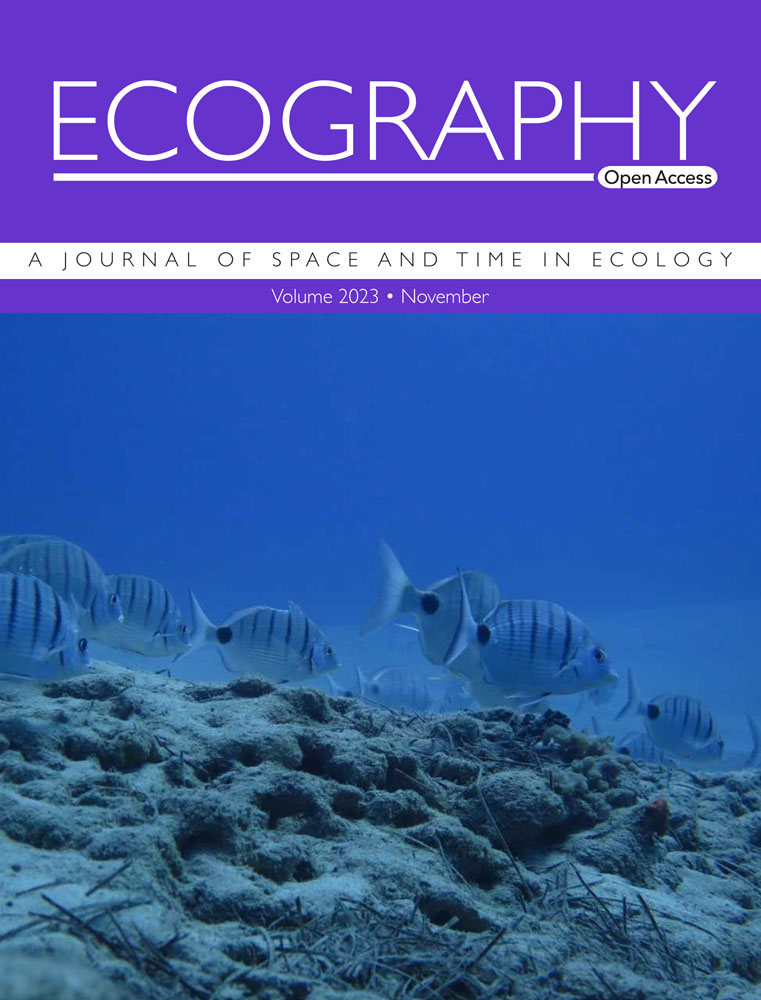淡水鱼的功能多样性对人类活动表现出不同的反应,但在热带地区持续下降
IF 5.4
1区 环境科学与生态学
Q1 BIODIVERSITY CONSERVATION
引用次数: 0
摘要
淡水环境与人类活动交织在一起,其后果是环境退化和生物多样性丧失。鱼类提供了关键的生态和经济效益,鱼类的丰度和多样性可能受到人类活动的影响,导致功能多样性(FD)的变化,可能扩大到生态系统的影响。FD的变化可以通过量化FD的三个主要组成部分来表达:丰富度、规律性和散度。人类活动如何影响FD的主要成分尚无共识。此外,人类活动对温带和热带地区群落功能多样性的影响可能由于区域物种库和功能特征分布的差异而有所不同。在这里,我们使用元分析方法,评估了淡水系统中不同的人类活动(例如森林砍伐、入侵、水库)如何影响鱼类群落的FD成分。我们收集了从2012年到2023年的信息,我们发现全球范围内的模式非常特殊,但面对热带地区的人类活动,功能丰富性和规律性的持续丧失。这种特质可能与高度的环境异质性或人类活动影响群落的多种方式有关,包括物种损失或非本地物种的引入,或功能独特性和冗余性的分布。热带地区功能多样性的减少表明,仅靠高冗余并不能阻止功能多样性的下降,人类活动正在从自然环境中消除特定的生态功能。尽管观察到减少的一般模式,但当地特征在塑造社区如何应对人类活动方面发挥着至关重要的作用。因此,有必要在局部范围内了解这些模式,并研究特定活动影响FD的机制。本文章由计算机程序翻译,如有差异,请以英文原文为准。
Freshwater fish functional diversity shows diverse responses to human activities, but consistently declines in the tropics
Freshwater environments are intertwined with human activities and the consequence has been environmental degradation and biodiversity loss. Fish provide key ecological and economic benefits, and fish abundance and diversity can be affected by human activities resulting in functional diversity (FD) changes that might scale up to ecosystem impacts. Changes in FD can be expressed by quantifying its three main FD components: richness, regularity and divergence. There is no consensus about how human activities affect the main components of FD. In addition, human activities might affect the functional diversity of communities differently in temperate and tropical regions because of differences in the regional species pools and the distribution of functional traits. Here, using a meta-analytical approach, we assess how different human activities (e.g. deforestation, invasion, reservoirs) in freshwater systems affect FD components in fish communities. We compiled information from 2012 to 2023, and we found highly idiosyncratic patterns globally, but consistent loss of functional richness and regularity in face of human activities in the tropics. This idiosyncrasy could be related to high environmental heterogeneity or the multiple ways in which communities can be affected by human activities, including species loss or introduction of non-native species, or the distribution of functional uniqueness and redundancy. The reduction of functional diversity in tropical regions reveals that high redundancy alone does not prevent declines in functional diversity, and that human activities are removing specific ecological functions from natural environments. Despite the general patterns of reduction observed, local features play a crucial role in shaping how communities respond to human activities. Therefore, it is essential to understand these patterns at a local scale and to investigate the mechanisms by which specific activities impact FD.
求助全文
通过发布文献求助,成功后即可免费获取论文全文。
去求助
来源期刊

Ecography
环境科学-生态学
CiteScore
11.60
自引率
3.40%
发文量
122
审稿时长
8-16 weeks
期刊介绍:
ECOGRAPHY publishes exciting, novel, and important articles that significantly advance understanding of ecological or biodiversity patterns in space or time. Papers focusing on conservation or restoration are welcomed, provided they are anchored in ecological theory and convey a general message that goes beyond a single case study. We encourage papers that seek advancing the field through the development and testing of theory or methodology, or by proposing new tools for analysis or interpretation of ecological phenomena. Manuscripts are expected to address general principles in ecology, though they may do so using a specific model system if they adequately frame the problem relative to a generalized ecological question or problem.
Purely descriptive papers are considered only if breaking new ground and/or describing patterns seldom explored. Studies focused on a single species or single location are generally discouraged unless they make a significant contribution to advancing general theory or understanding of biodiversity patterns and processes. Manuscripts merely confirming or marginally extending results of previous work are unlikely to be considered in Ecography.
Papers are judged by virtue of their originality, appeal to general interest, and their contribution to new developments in studies of spatial and temporal ecological patterns. There are no biases with regard to taxon, biome, or biogeographical area.
 求助内容:
求助内容: 应助结果提醒方式:
应助结果提醒方式:


